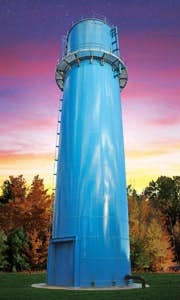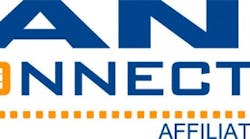The Windmill Gap tank project is located in southern West Virginia near the town of Bramwell on top of a mountain with an elevation of 3,400 ft. The construction of a 55,000-gal storage tank posed many challenges to the owner, Bluewell Public Service District; engineer, Stafford Consultants Inc.; general contractor, Chojnacki Construction; and tank provider, Tank Connection. The biggest challenge to overcome was the subsurface geology, along with old mine workings created from extracting coal from underneath the site over the past 60 years. The existence of the old mine workings was an intimidating problem, as it added risk to the project.
Risky Business
The risk of building on a site underlain by old mine workings contributed to a tank failure that occurred in Clover Bottom, Ky. The tank failed due to subsidence of the ground caused by mining activity. As a result, in the traditional West Virginia tank market, providers’ insurance companies would not provide a bond to cover construction.
A risk management approach was applied by the owner, engineer and general contractor to acquire a tank for the project. With few available options, the team was determined to stay with the original site since it had the highest topography required for the tank to operate properly, and the surrounding area also was underlain by old coal mine workings.
In order to better define the geotechnical engineering factors required to design a foundation compatible with the existing subsurface conditions, a subsidence study—an engineering analysis that predicts how much ground settlement from its current elevation a site can expect due to the past mining activity—was performed. The subsidence model predicted that the Windmill Gap tank site had the potential for 2 ft of horizontal and 1 ft of vertical settlement.
Tank Design
Based on the subsidence study, it was determined that the design of the tank needed the following features:
- The original elevation of the top of the tank was increased by 2 ft in order to compensate for the predicted horizontal settlement.
- The structure of the tank had to be adjustable to be raised 1 ft in all directions to compensate for the predicted vertical settlement.
- An inclinometer was added to the tank to provide the owner with a notice in case subsidence occurred.
- The mat foundation was selected for the tank due to its ability to bridge small localized areas of ground subsidence.
Tank Connection’s Poster Series elevated water tank was selected because it met three out of four of the technical requirements. The series is available with a bolted steel pedestal. The bolted pedestal pictured at left utilizes RTP (rolled, tapered panel) construction. Tank Connection’s coating systems are factory baked-on to a substrate surface that has been blasted to an SP10 (near-white) surface profile. The coating system utilized is LIQ Fusion 7000 FBE, a high-performance coating system for potable water storage tanks. Tank Connection is the exclusive provider of this system and maintains the only powder coat line certified to apply this coating for bolted water tank applications.
Tank Connection supplied the site work, foundation installation, tank fabrication, tank installation, mixing system, lightning protection, cathodic protection and additional scope items for a turnkey project. In the latter part of the West Virginia construction season, under extreme weather conditions, the company finalized the tank and its portion of the work in 119 days.
Download: Here



